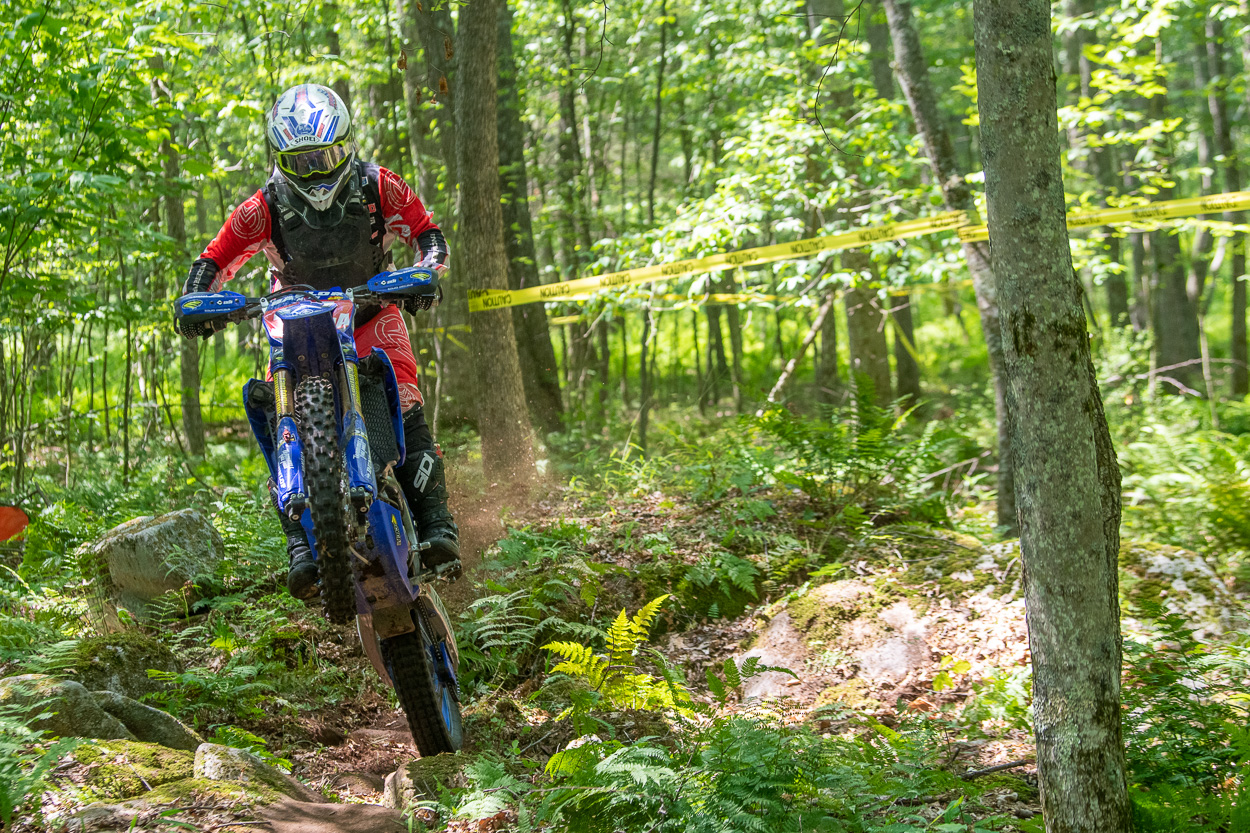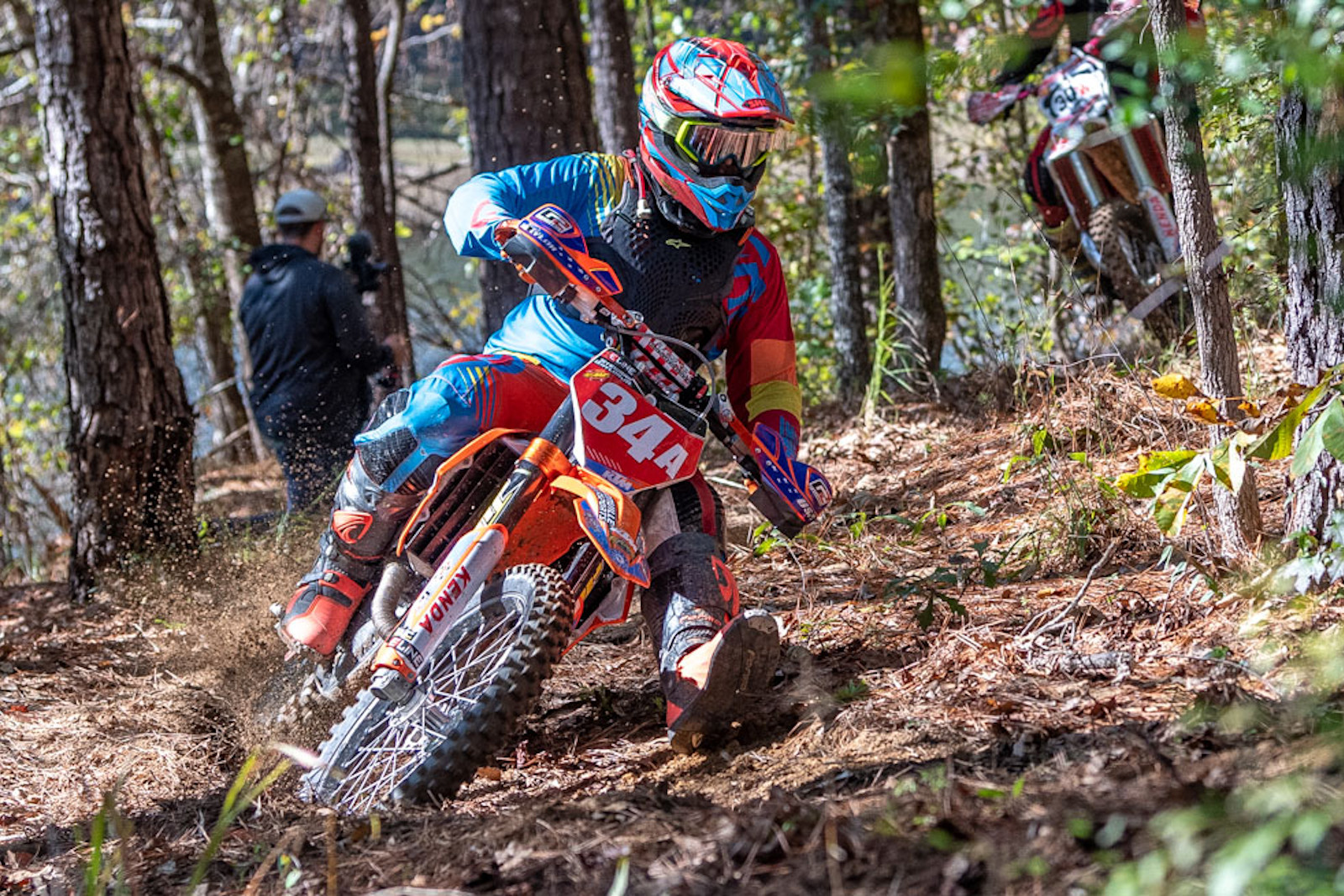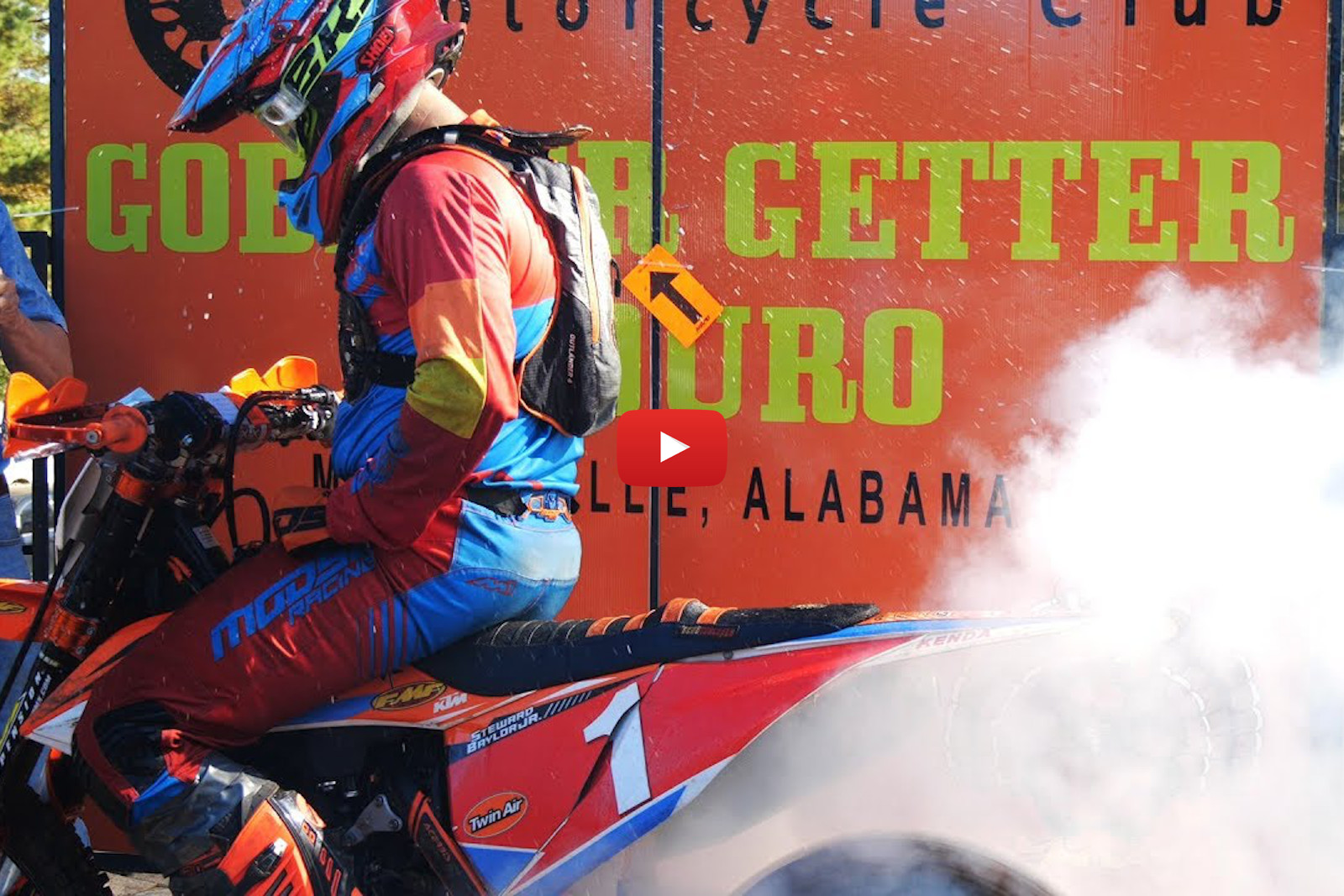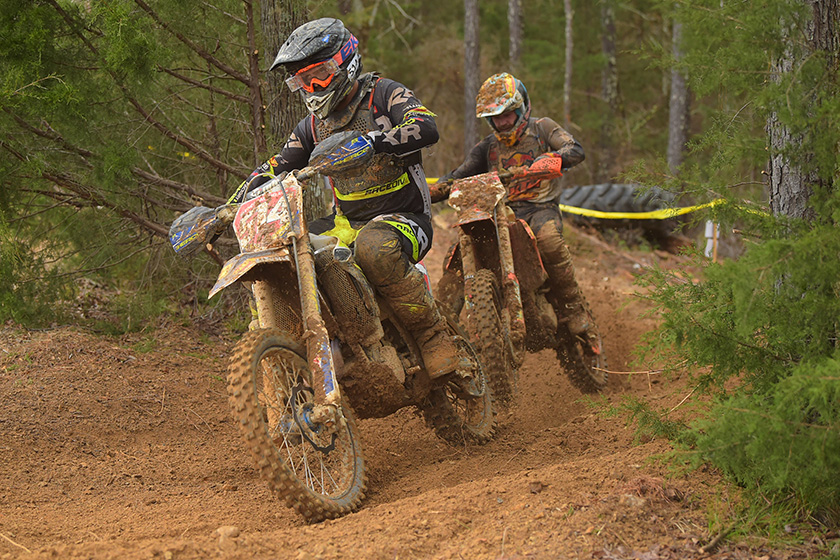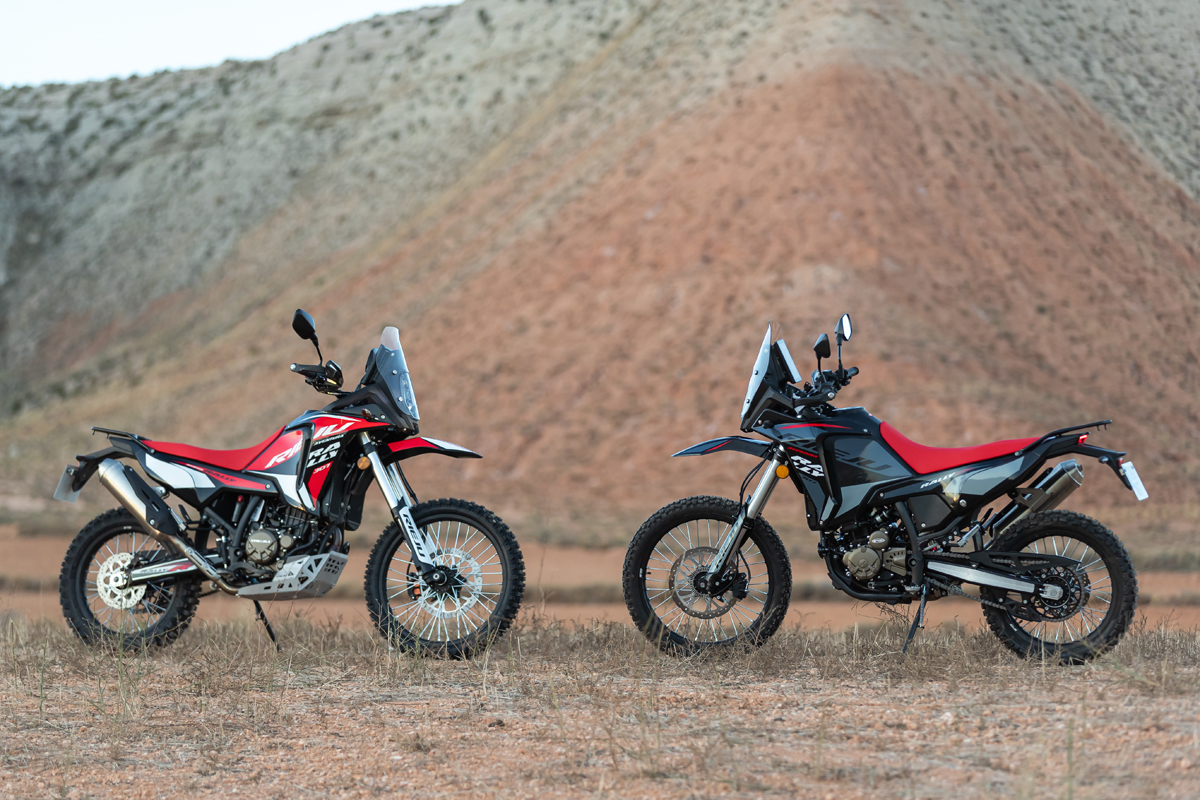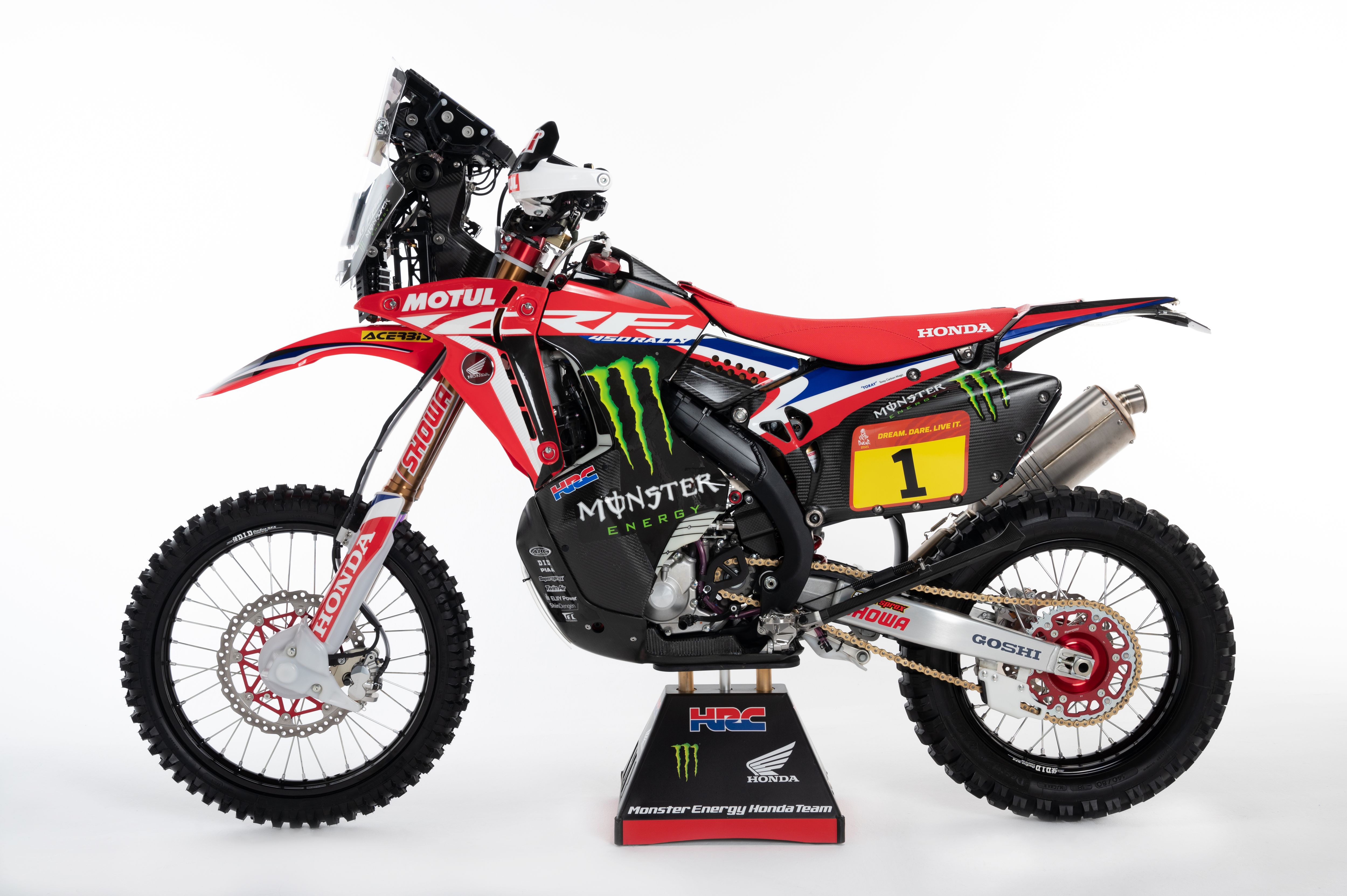Quick look: using trials tyres in enduro? It works for Steward Baylor...
Trials tyres for enduro? Steward Baylor uses old school tactic for better traction to take the 2022 Rattlesnake National Enduro, NEPG round five win in the Pennsylvania woods. Enduro21 takes a quick look at how come a trials tyres can work for enduro.
When Steward Baylor fitted a Dunlop D803GP trials tyre to his AM Pro Yamaha YZ450X race bike to win the 2022 Rattlesnake National Enduro it reminded us of the good ol’ times. In a world where parts, especially tyres (tires to our US readers), are increasingly specialised to their sport, it was a refreshingly ‘old school’ option used for success in a modern race series.
Trials is all about grip, so why not in tricky conditions?
Back in the day, before regulations at many events banned anything except approved tyres, it was common to see a trials tyre on an enduro bike at a race. Some of the old boys of enduro from back in the ‘80s and ‘90s will have stories of using them at particular events where conditions were technical and they looked for an advantage.
In the early days of the sport of Hard Enduro, a trials tyre was the choice option for the main event at a race like Erzbergrodeo.
It’s rare these days though to see one on an enduro or off-road bike, particularly in a race. So, what was Baylor up to at the Rattlesnake? Who better to explain than the man himself: “I choose the trials tire sometimes in the rocky conditions because I feel it is sometimes more predictable than a gummy 81.” Steward explains.
“Although it will not perform as well in some conditions, mud for example, it does work better at a track like the Rattlesnake because there are so much more rocks mixed in the dirt.
“Also, with the knobbles so close together on a trials tire, I don’t feel it roll so much as the 81 gummy.”
Why not a gummy hard enduro tyre?
Steward answered a couple of our questions when we got in touch, including why not just use one of Dunlop’s softer, more extreme enduro “gummy” tyres or a softer mousse? As Stew says, he feels the flatter profile of the trials tyre “rolls” less which means it can be more consistent as he hits the rocks in those Pennsylvanian woods.
The “gummy” or extreme tyres and super-soft mousses used by the likes of Graham Jarvis are FIM regulation sizes and measurements for a start, we’re not allowed to use a trials tyre at many events. They squish right in to the terrain by design. As such that means they are not very stable at all and easily roll over on their own side wall at any kind of speed.
How does it feel?
A trials tyre naturally doesn’t have the edge grip of an enduro tyre, the profile is flatter compared to a rounded shape of a regular enduro tyre and the knobblies are spaced closer together. This means the feel for grip improves in certain conditions (over rocks) but is worse in others (a flat turn on a grassy enduro test).
Side wall stability and strength of a regular enduro/off-road tyre is stronger, compared to the thin-sided trials tyre and this naturally makes a big difference if you are riding fast too. An enduro tyre is more stable and predictable at high speeds and ‘normal’ conditions.
You can counteract that lack of side wall strength by increasing the pressure and that helping the trials tyre keep it shape more as you ride.
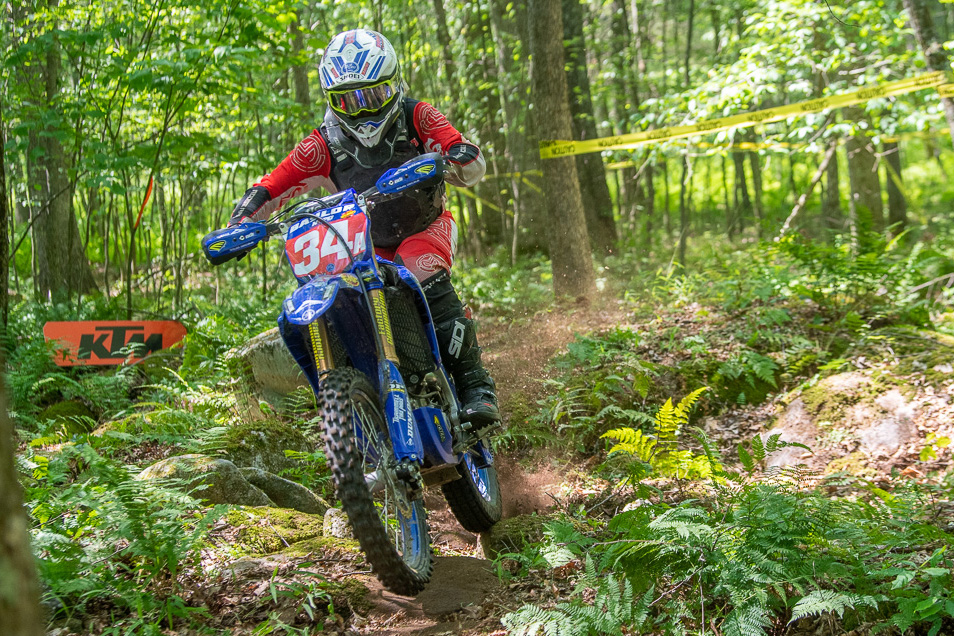
Steward chose to compromise edge grip, or the bite his bike had leant over in the turns and switching left and right through the trees, for better feel for grip on the rocks.
The contact patch and flat tread of the trials tyre is touching the ground specifically where it hits the rocks. So for Stew, that meant better grip and feel at this race.
Trail riders’ favourite
Ultimately, if you’re not railing round corners and leaning the bike over, edge grip is less of an issue and that’s why some trail riders go for trials tyres on the back of their bikes. Depending on the riding conditions, they can give a more comfortable ride as well as improve grip.
Part of the reason why people have stopped using them so much these days in enduro is because they have gotten more specialised for the sport (as much as regulations forbidding them). The Dunlop D803GP in theory is a tried and tested rear hoop for many of the riders including at the infamous Scottish Six Days Trial but this is the first time we've seen one race for the win in a timed enduro test lately.
Soft trials tyres can wear out quickly because they are designed to grip better than last (especially the super-sticky latest generation trials sport tyres) and there is obviously an increased risk of puncturing or tearing the thinner side walls.
But there are a decent number of trials pattern tyres out there which aren’t actually good enough for trials competition, but which make perfect fodder for trail riding. You’ll find them fitted as standard to bikes like the KTM Freeride for example and the sizes are the same, 18-inch rear wheels are common to enduro and trials.
Anyway, it is food for thought, especially when some of us get stuck into ruts (literally and metaphorically) with which rear tyres to fit and use. Maybe it’s time to think outside the box like big Stew?
Photo Credit: Shan Moore




